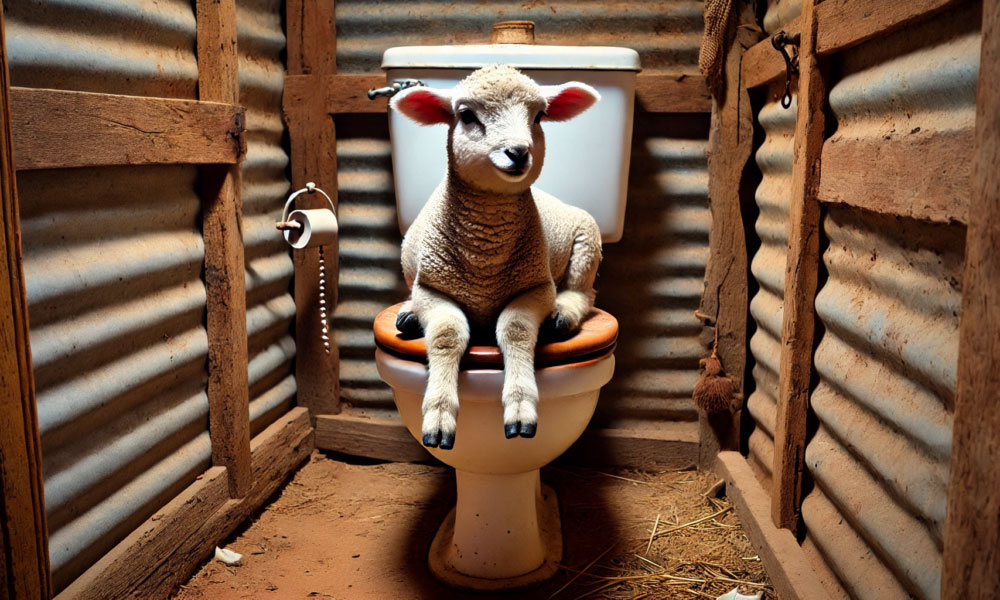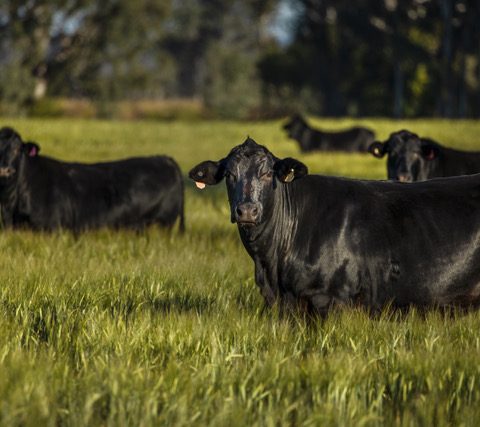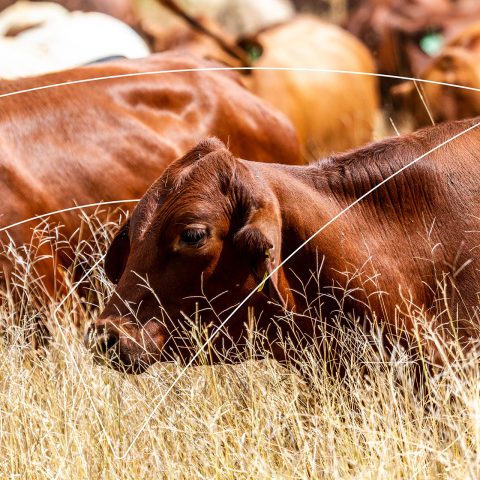Market Morsel
It has been a slow start to the spring lamb flush this year, particularly in Victoria and South Australia, with available lamb slaughter ready lambs in short supply due to a difficult season. Heavy lambs have been relatively scarce, as evident by the price premiums being held over all other Meat & Livestock Australia (MLA) reported lamb categories for several months now.
As of last week the National Heavy Lamb Indicator is sitting at a 21% price premium over the National Light Lamb Indicator at 833c/kg cwt versus the light lamb equivalent on 689c/kg. Indeed, compared to this time last year the National Heavy Lamb price is sitting 325 cents higher.
A quick glance at the other lamb categories shows that most are priced well higher than what we saw during October 2023. National Light & Restocker Lambs are around 280 cents stronger and the National Trade Lamb Indicator is around 315 cents above the levels seen this time last season. Meanwhile Merino lambs are trading nearly 230 cents better off and even the National Mutton Indicator is 180 cents above October 2023 levels.
Usually as we proceed through spring lamb numbers start to swell and this is particularly evident in Victoria and South Australia where there is a rather pronounced lift in available lambs offered at the saleyards during late spring and early summer in these two states. However, this season the spring flush is running behind schedule. In Victoria & South Australia current weekly lamb volumes presented at the saleyard are about 23% lower than the five year average for October.

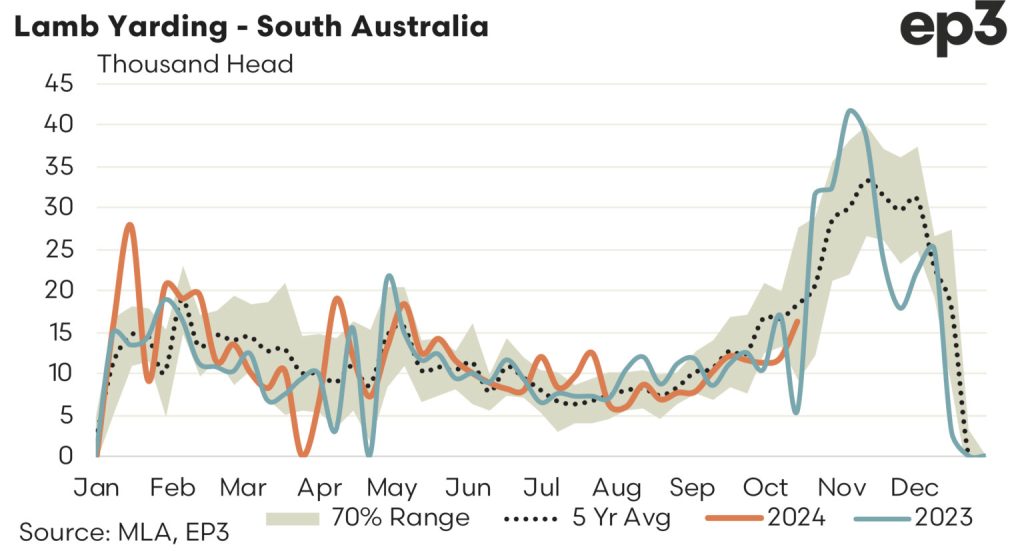
This situation of tighter lamb supply is keeping prices uncharacteristically buoyant for this time of the season and playing havoc with processor margins for the lamb job. MLA lamb pricing trends over the last four weeks have shown light lambs increasing by almost 90 cents, heavy lamb up by 50 cents and trade lambs up by 30 cents. Normally at this time of the year prices for these lamb categories are softening.
Processors across the country are responding to reduced margins on the lamb cull by favouring sheep on the processing floor wherever they can as the margins on sheep are a bit more robust at present.
In New South Wales the current lamb slaughter index sits at 27% and the sheep slaughter index sits at 78%. This highlights that weekly lamb slaughter volumes in NSW at present are higher than 27% of historic weekly records for the past five years while weekly sheep slaughter volumes are currently running higher than 78% of the historic weekly records.
This is a pattern that is repeated across much of the country. In Victoria the lamb slaughter index sits at 37% and the sheep slaughter index is on 96%. For clarity this means that at present the weekly sheep slaughter volumes in Victoria are running higher than 96% of all weekly slaughter volumes seen over the last five years.
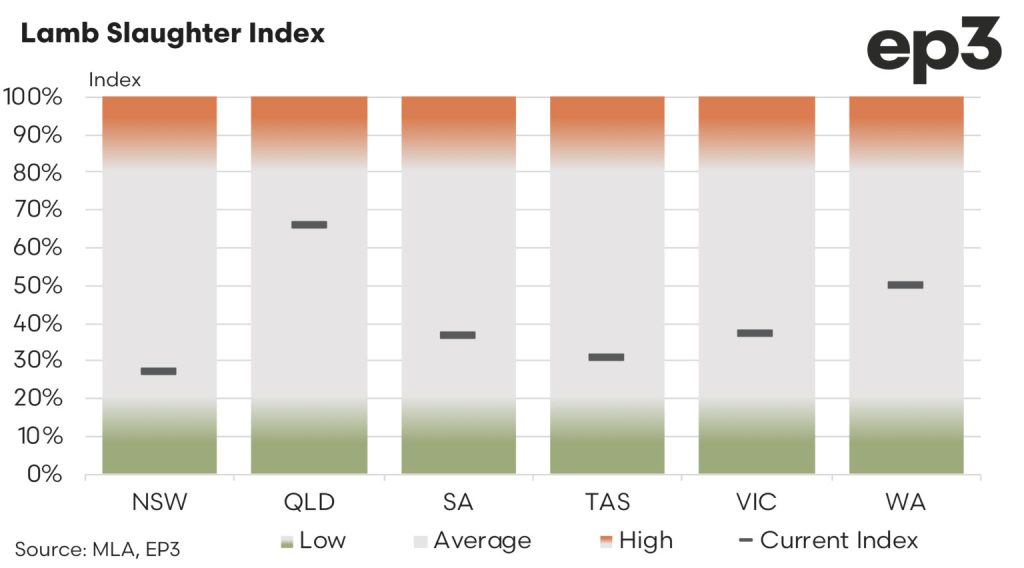
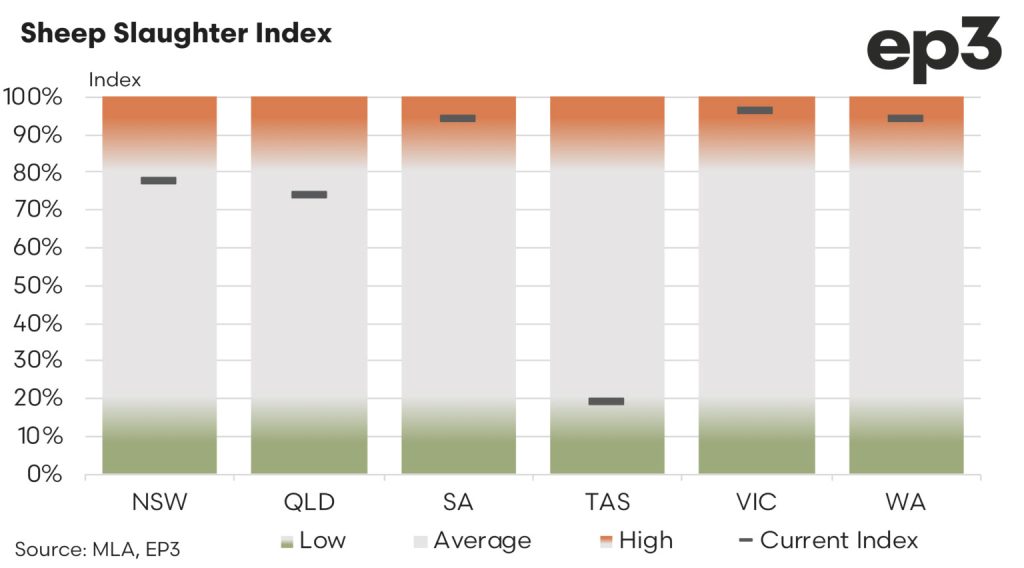
In South Australia weekly sheep slaughter is equally robust on an index score of 94%, meanwhile the lamb slaughter index in SA is at 37%. Queensland doesn’t process many sheep and lamb these days but they are still favouring sheep too with an index score of 74% versus the 66% presently seen for lamb slaughter.
Over in the west the slaughter situation is mirroring the eastern states with the WA sheep slaughter index sitting at 94% and the WA lamb slaughter index on 50%. A score of 50% on this index indicates that current WA lamb slaughter is at the median level – metaphorically “sitting on the fence”. Historically speaking, based upon the last five years of weekly lamb slaughter data in WA, the current volumes are right in the middle of the data set with 50% of prior records sitting above and 50% sitting below the current slaughter volume.
Away from the mainland Tasmania is a bit of an outlier with their sheep slaughter index not scoring as high as their lamb slaughter index. Sheep are running at 19% versus the Tasmanian lamb slaughter index on 31%. This is likely a reflection of the low sheep yarding levels seen in Tasmania though, compared to the mainland states the Tasmanian sheep yarding index is pretty underwhelming. Across all the mainland states the sheep yarding index scores range between 66% to 83% at present, whereas in Tasmania the sheep yarding index sits at just 27%.
